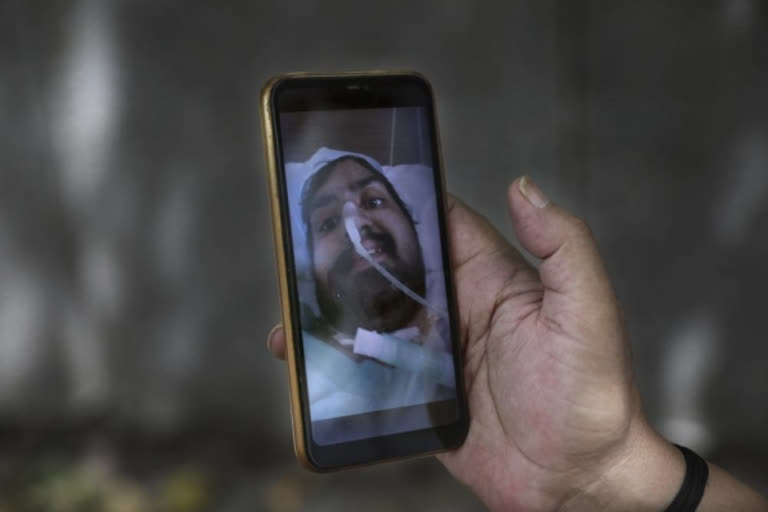New Delhi:As coronavirus cases ravaged India this spring, Anil Sharma visited his 24-year-old son Saurav at a private hospital in northwest New Delhi every day for more than two months. In May, as India’s new COVID-19 cases broke global records to reach 400,000 a day, Saurav was put on a ventilator.
The sight of the tube running into Saurav’s throat is seared in Sharma’s mind. “I had to stay strong when I was with him, but immediately after, I would break down as soon as I left the room,” he said. Saurav is home now, still weak and recovering. But the family’s joy is tempered by a mountain of debt that piled up while he was sick.
Life has been tentatively returning to normal in India as coronavirus cases have fallen. But millions are embroiled in a nightmare of huge piles of medical bills. Most Indians don’t have health insurance and costs for COVID-19 treatment have them drowning in debt.
Sharma exhausted his savings on paying for an ambulance, tests, medicines and an ICU bed. Then he took out bank loans. As the costs mounted, he borrowed from friends and relatives. Then, he turned to strangers, pleading online for help on Ketto, an Indian crowdfunding website. Overall, Sharma says he has paid over $50,000 in medical bills.
The crowdfunding provided $28,000, but another $26,000 is borrowed money he needs to repay, a kind of debt he has never faced before. “He was struggling for his life and we were struggling to provide him an opportunity to survive,” he said, his voice thick with emotion. “I was a proud father -- and now I have become a beggar.”
The pandemic has devastated India’s economy, bringing financial calamity to millions at the mercy of its chronically underfunded and fragmented healthcare system. Experts say such costs are bound to hinder an economic recovery. “What we have is a patchwork quilt of incomplete public insurance and a poor public health system. The pandemic has shown just how creaky and unsustainable these two things are,” said Vivek Dehejia, an economist who has studied public policy in India.
Even before the pandemic, healthcare access in India was a problem. Indians pay about 63% of their medical expenses out-of-pocket. That’s typical of many poor countries with inadequate government services. Data on global personal medical costs from the pandemic are hard to come by, but in India and many other countries treatment for COVID is a huge added burden at a time when hundreds of millions of jobs have vanished.
Read:Fauci says US headed in `wrong direction’ on coronavirus
In India, many jobs returned as cities opened up after a severe lockdown in March 2020, but economists worry about the loss of some 12 million salaried positions. Sharma’s job as a marketing professional was one of them. When he asked his son’s friends to set up the campaign on Ketto to raise funds, Sharma hadn’t seen a paycheck in 18 months. Between April and June this year, 40% of the 4,500 COVID-19 campaigns on the site were for hospitalization costs, the company said.
The pandemic has driven 32 million Indians out of the middle class, defined as those earning $10 to $20 a day, according to a Pew Research Center study published in March. It estimated the crisis has increased the number of India’s poor -- those with incomes of $2 or less a day -- by 75 million.
“If you’re looking at what pushes people into debt or poverty, the top two sources often are out-of-pocket health expenditure and catastrophic costs of treatment,” said K Srinath Reddy, president of the Public Health Foundation of India.
In the northeastern city of Imphal, 2,400 kilometers (1,490 miles) away, Diana Khumanthem lost both her mother and sister to the virus in May. Treatment costs wiped out the family’s savings, and when the private hospital where her sister died wouldn’t release her body for last rites until a bill of about $5,000 was paid, she pawned the family’s gold jewelry to moneylenders.
